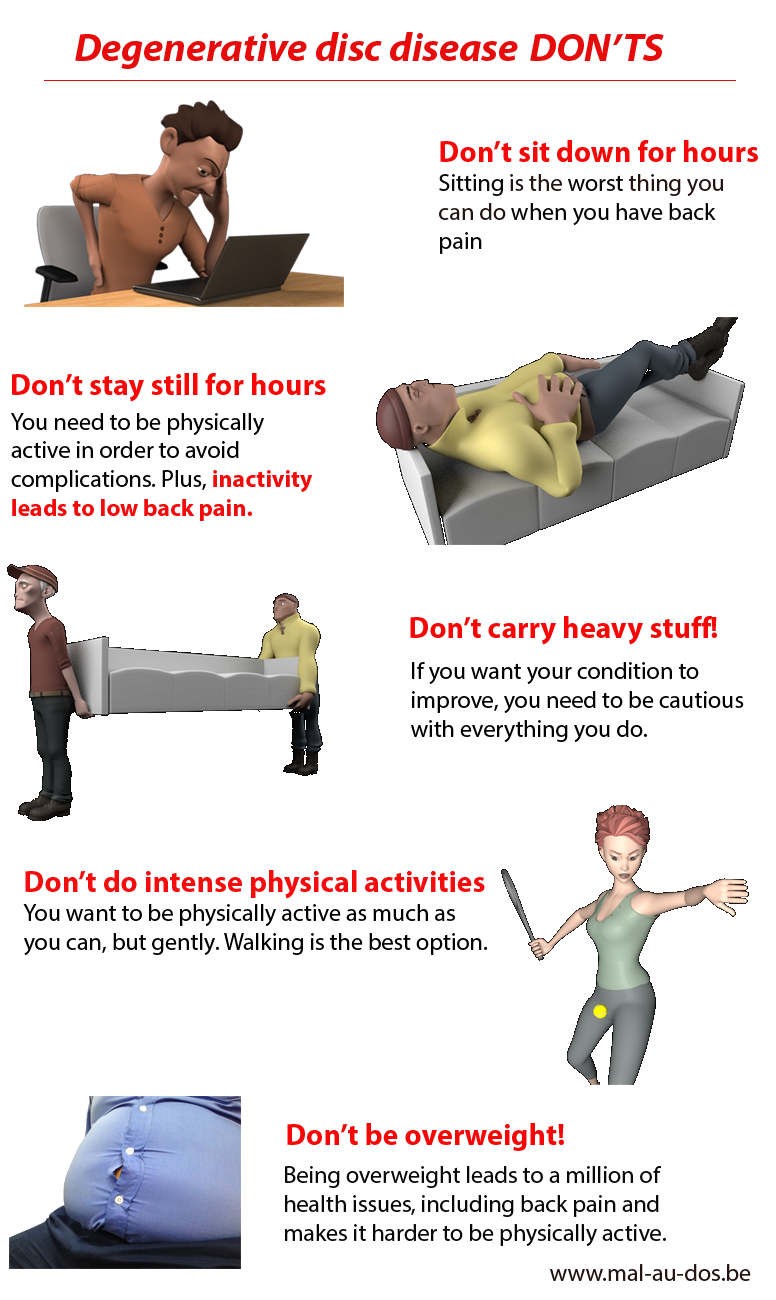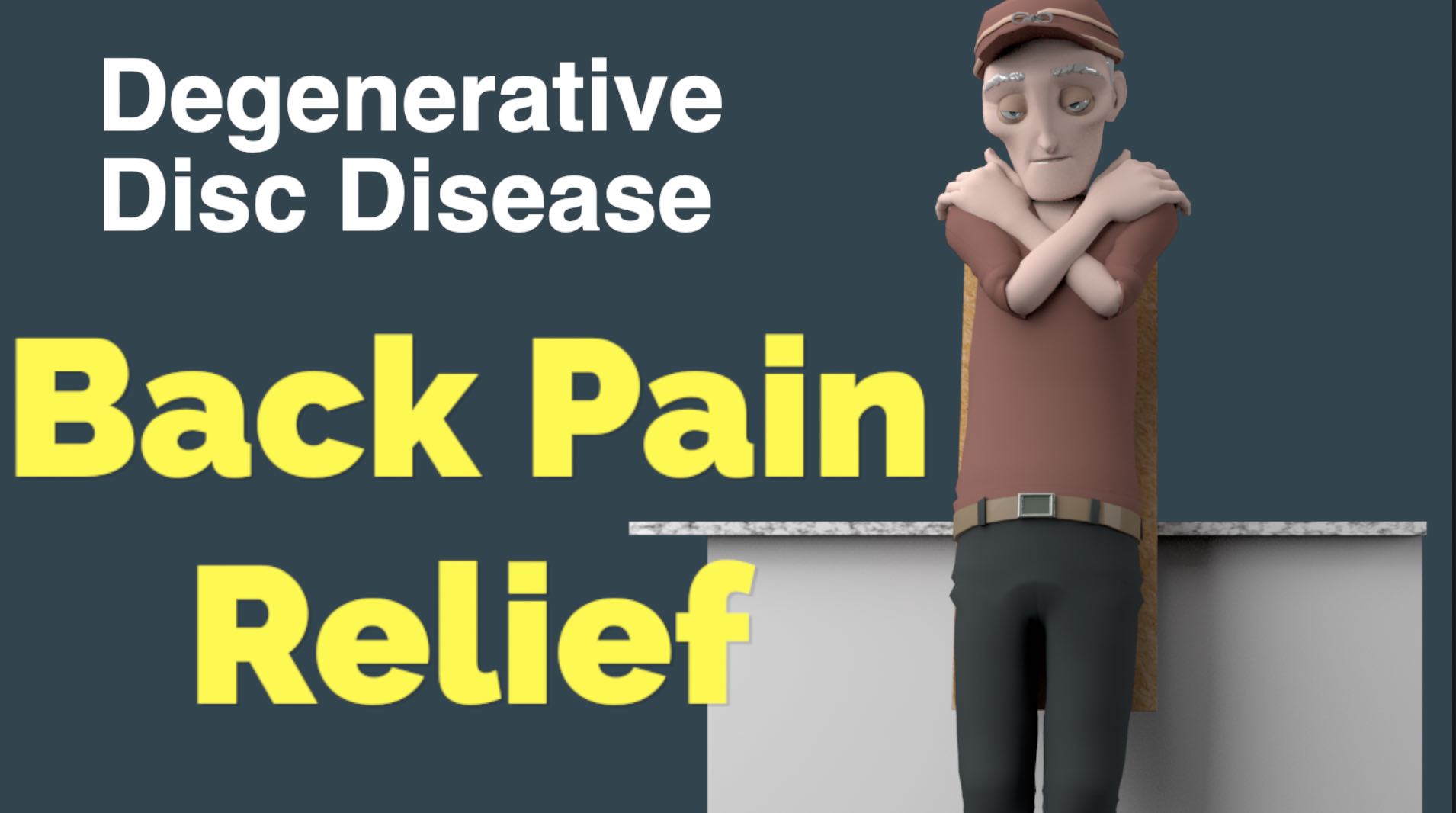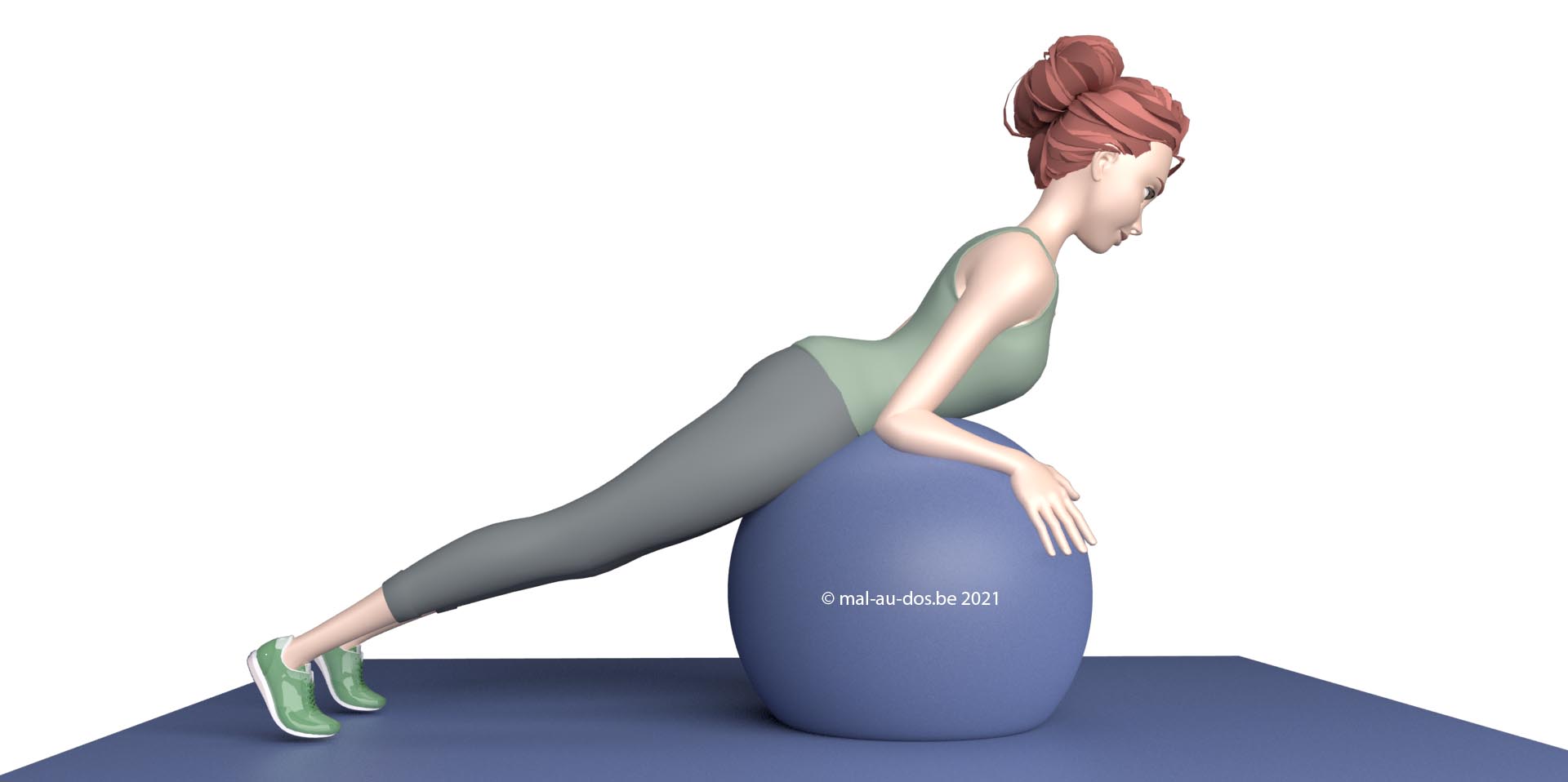Lumbar Degenerative disc disease is one of the most frequent causes of back pain.
In this article, we take a look at:
- What is lumbar degenerative disc disease? Video
- How does a spinal disc deteriorate?
- Why it causes back pain?
- What are causes & the symptoms lumbar degenerative disc disease?
- What is the common conservatory treatment?
- Things to Avoid with Degenerative Disc Disease
- Exercises to Avoid with DDD
- 3 effective tips to help reduce back pain from lumbar degenerative disc disease
What is Lumbar Degenerative Disc Disease? Video
Degenerative disc disease is not an illness per sé.
It is the natural consequence of aging on one or more intervertebral discs.. Degenerative disc disease can occur on any level of the spine, but most of the time, it occurs in places where the spine undergoes the most pressure: in the neck, and in the lower back, causing back pain that may be constant.
The spine is composed of bone structures: the vertebrae, separated from each other by an intervertebral disc that acts as a shock absorber and absorbs some of the shocks and the pressure naturally happening on the vertebrae when we move… or when we sit down.
How Does the Intervertebral Disc Deteriorate?
The intervertebral discs provide flexibility to the spine, allowing to perform bending, twisting, and preventing the bones from touching each other. At least until a certain age when things start to get complicated for some of us.
An intervertebral disc is made of a flexible fibrous cartilage ring on the outer part, and a gelatinous nucleus in its internal part.
This nucleus contains mostly water and nutrients whose quantities decrease with age, which favours the process of degeneration.
With aging and according to one’s lifestyle, the fibrous ring of the disc can deteriorate, the nucleus is going to dehydrate, causing a decrease in volume of the intervertebral disc, back pain, and several symptoms related to lumbar degenerative disc disease.
DDD Happens with Age
Degenerative disc disease is a problem that usually occurs after 40, depending on one’s lifestyle or job.
With aging and according to one’s lifestyle, the fibrous ring of the disc can deteriorate, the nucleus is going to dehydrate, causing a decrease in volume of the intervertebral disc, back pain, and several symptoms related to degenerative disc disease.
The problem is the space reduction between the 2 vertebrae separated by the intervertebral disc, whose volume has decreased.
If the fibrous ring deteriorates on its posterior part, the nucleus is at risk of touching & compressing the nearby nerve root, causing:
- inflammation
- back pain
- sciatica
- numbness of a foot or one leg
Another symptom related to this volume decrease of de intervertebral disc caused by degenerative disc disease: bones can touch each other, causing pain, inflammation, and, last but not least, a significant reduction of one’s mobility.
Bone Spurs (Osteophytes)

The body knows something’s not right and tries to fix it, by literally growing bones on bones in order to prevent vertebrae from touching each other. These are called osteophytes, AKA bones spurs, which also cause inflammation and back pain, especially if they are close to a nerve root, which they are likely to compress…
And that hurts!
Moreover, since this happens in the lumbar region, in addition to back pain, the patient will also have to deal with sciatica.
Degenerative disc disease cannot be reversed, which explains why back pain is a common problem at a certain age & for a significant part of the population.
Degenerative disc disease can happen to anyone & to various degrees.
- People who have a physically hard job.
- People sitting at a computer all day and all life long.
- People who do not move enough.
- People who are overweight.
- People who practice sport at a high-level.
- Degenerative disc disease may also occur after a bad fall or an accident.
L5-S1 Degenerative Disc Disease

l5-s1 degenerative disc disease is when the damaged disc is located between the last lumbar vertebra (l5) and the 1st sacral vertebra (S1). The degenerative disc disease l5-s1 is a problem that frequently affects the people who work sitting down.
Degenerative Disc Disease Treatment
Degenerative disc disease can not heal: the damaged disc won’t return to its initial state.
Most of the time, the condition gets stable & the traditional treatment consists of helping the patient live with it.
Once diagnosed, the patient gets a prescription for pain killers & anti-inflammatories to manage back pain and PT sessions during which he will learn exercises to do every day.
Exercising at home will strengthen the muscles in the back, and preserve is mobility.
The patient will also re-learn some gestures of the day to day life: how to bend, how to lift an object, how to sit well to prevent back pain from turning into a severe disability.
Which doctor should you see?
A rheumatologist, orthopedic surgeon or a neurosurgeon (in case of very severe pain) are the specialists to see for Degenerative disc disease treatment

Things to Avoid with Degenerative Disc Disease
If you want your condition to improve, you need to be cautious with what you’re doing. Carrying furniture or other heavy stuff is not going to do you any good.
Being overweight leads to millions of health issues, including back pain and makes it harder to be physically active..
If you suffer from DDD, you still want to be physically active as much as possible but be aware of the consequences of intensive sports activity.Walking is the best option
You want to be physically active to avoid your condition to get worse. Inactivity leads to low back pain
Sitting still is the worst thing you can do for your health. Especially if you have DDD and chronic back pain.

Exercises to avoid with DDD






Additional things to avoid with DDD
Walter’s TOP 3 Tips For Back Pain Relief
In addition to the tips described above, our friend Walter gives us his 3 favorite tips to relieve his back pain. You can share yours in the comments below, or on the Youtube watch page of this video if you’d like.
#3 – Massage With Hot Water
To relieve back pain, anything that looks like a massage works quite well. Unfortunately, often, the benefits of massage stop as soon as the massage is over.
With hot water & morning shower, things are different.
The well-being provided by the hot water will allow Walter to get relief from the usual morning back pain, and start the day off with an acceptable level of pain.
Getting back pain relief with hot water is much more effective and practical than a regular massage. Plus, your massage, you need to plan it, book it booked, get there, pay for it.
Whereas hot water: it’s always there.
After 20 years of chronic back pain caused by disc disease for Walter, it’s a no brainer.
#2 – The 5mm wood board

This is Walter’s best friend. It’s a simple wood board, 40cm by 30cm, doesn’t really matter, it’s just to give an idea of its size. what matter is its thickness: 0.5 cm
That is ideal to support the back.
Rigid enough to offer good support, soft enough to not be uncomfortable like a thicker wood board.
And it’s cheap so, Walter has a couple of them, for use wherever he needs to: chair, couch… in the car… this provides almost instant back pain relief! Even in his bed.
Sometimes Walt will just stand in the kitchen, using the wood board to support his back and decrease pressure on his spine.
This is a great trick for back pain relief!
#1 – Walk!
Walking is the best thing you can do for your back,
The most important takeaway from this video: the last thing to do if you have chronic back pain because of degenerative disc disease, is to stay without moving for too long.
The less you move, the more your back hurts and the more your back hurts the less you’ll want to move. It’s a vicious circle in which you do not want to get stuck!
So, degenerative disc disease or not, be physically active.
Gently, but active!






